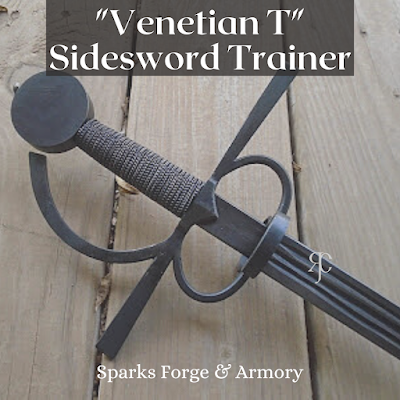The "Lecküchner" Langes Messer
A Langes Messer, like the Lecküchner model here, is an interesting detour on the evolution of swords. Coming from the word for "knife," or in this case "long knife," langes messers seem to have been an almost strictly German weapon. While there are many commonly believed myths about origin of the messer, most agree on the fact that it likely had something to do with guild law.
This messer is named after the 15th century fencer and cleric, Johannes Lecküchner, who wrote two treatises on the use of these weapons, and whose drawing this blade's design comes from.
The blade is 65 cm in length, with a 18 cm hilt, coming to an overall length of 83 cm.
The blade is 80CrV2 with a blue-backed spine. The fittings on the Messer are 1018 mild steel. The handle is made of white oak handle scales attached with tubular rivets.
This particular model (above) features a type CC1 pommel and a N5b nagel.
Originals at the Kunsthistorisches Museum Austria
Countless swords of this period, particularly messers, often came paired with at least one small eating knife, called a by-knife, and a form of awl, called a pricker. The set above is similar to the set for this messer and goes with the messer of the Holy Roman Emperor, Maximillian I.
The by-knife and pricker are 440 stainless with 304 stainless fittings. Like their larger companion, the by-knife and pricker have matching oak handle and brass pins.
Due to the fact that Johannes Lecküchner did not include pictures of the scabbards in his treatise, scabbard for the Lecküchner has no one particular inspiration. Like the blades themselves messers in artwork have an extreme amount of variation from highly complex multi strap scabbard suspensions to no scabbard at all.
As such I went with a three point scabbard suspension similarly to a longsword. Only unlike the longsword the messer hangs much more vertically. This type of suspension appears to be equally as common with messers as with swords due to its stability. In addition inspiration was taken from period finds such as this sword belt distributer.
Price Estimate
- A messer like this cost about $850.
- Note this does not include the by-knife set, scabbard, or its fittings and suspension system.
- Due to the almost infinite variation of these swords you would have to contact me with what you want for a more accurate price estimate.










.png)
